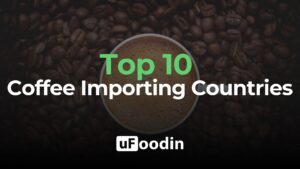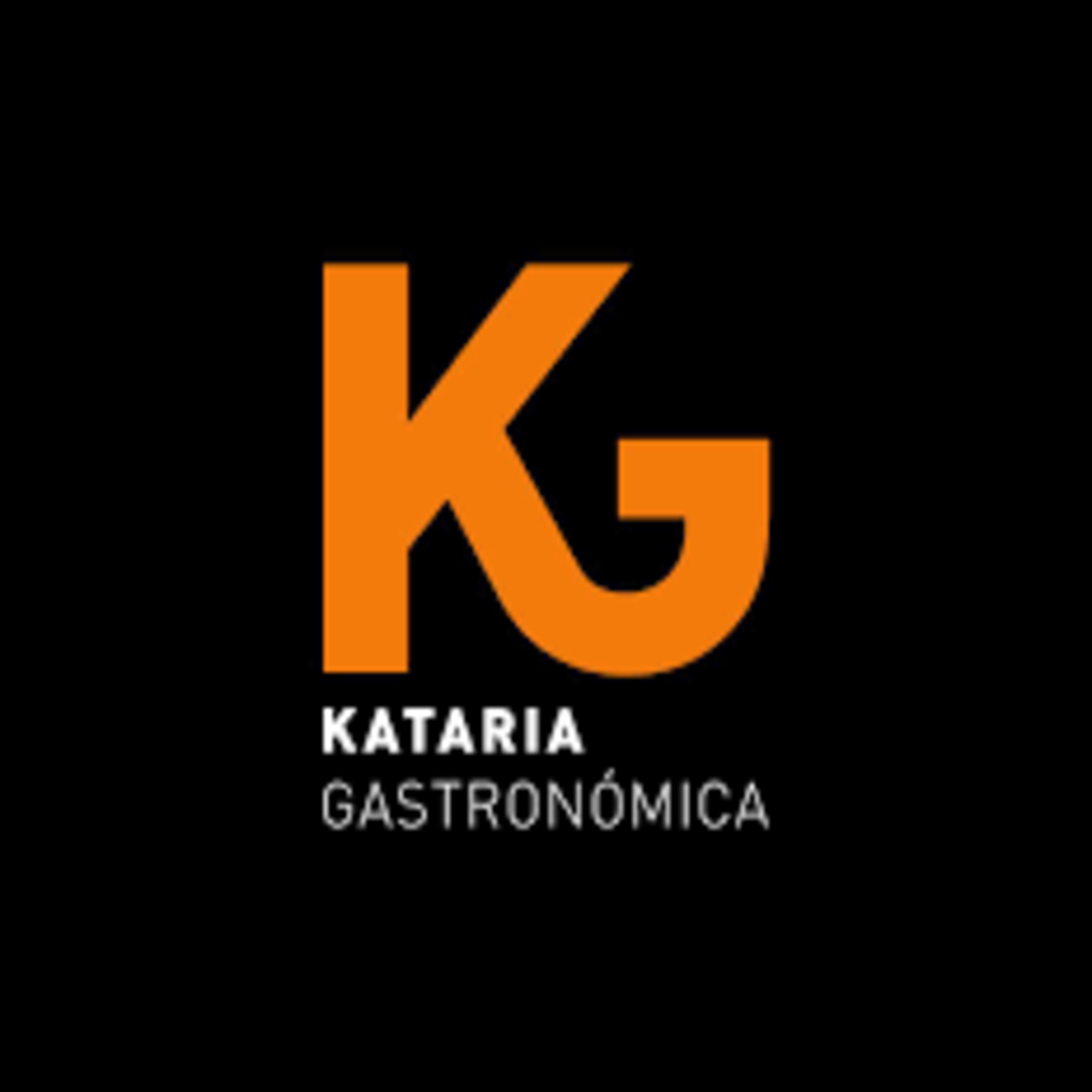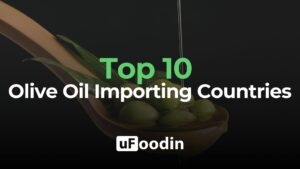
Top 10 Coffee Importing Countries
Coffee remains a global staple, with over 2 billion cups consumed daily worldwide and an annual import volume exceeding 10 billion kilograms. In 2023, the global coffee market was valued at $495 billion, with imports accounting for $38 billion, reflecting the industry’s reliance on international trade. The top 10 coffee-importing countries, including the United States, Germany, and Japan, account for over 75% of total coffee imports, highlighting the concentrated demand in a few key markets.
In mature markets such as North America and Europe, specialty and sustainable coffee are driving growth, while emerging economies in Asia are rapidly increasing their imports due to urbanization and rising middle-class populations. With global coffee consumption projected to grow at a CAGR of 4.7% through 2030, understanding the dynamics of key importing countries is essential for producers seeking to expand their market presence.

1. United States
Import Volume: Over 1.4 billion kilograms annually
Value of Imports: Approximately $7 billion (2023)
Why It Stands Out: The U.S. is the world’s largest coffee importer by value, driven by its massive coffee culture. Specialty coffee is growing rapidly, with increasing demand for ethically sourced beans.
Key Insights: Cold brew, nitro coffee, and functional coffee beverages are leading innovation in the U.S. market.
2. Germany
Import Volume: Around 1.2 billion kilograms annually
Value of Imports: Approximately $4.5 billion (2023)
Why It Stands Out: Germany is Europe’s largest coffee importer, serving both domestic consumption and as a distribution hub for surrounding countries.
Key Insights: Germans have a strong preference for high-quality Arabica beans, particularly from Brazil and Ethiopia.
3. Japan
Import Volume: Over 400 million kilograms annually
Value of Imports: Approximately $1.6 billion (2023)
Why It Stands Out: Japan’s market is defined by a love for specialty and convenience coffee, such as canned and ready-to-drink options.
Key Insights: Japanese consumers value premium, sustainably sourced coffee, making certifications like Fair Trade highly attractive.
4. Italy
Import Volume: Around 380 million kilograms annually
Value of Imports: Approximately $1.5 billion (2023)
Why It Stands Out: Italy, the birthplace of espresso, maintains a strong coffee culture and serves as a key market for high-quality Arabica and Robusta blends.
Key Insights: Italian coffee imports support a thriving domestic roasting industry, which exports to markets worldwide.
5. France
Import Volume: Over 360 million kilograms annually
Value of Imports: Approximately $1.4 billion (2023)
Why It Stands Out: France imports coffee for its robust café culture and growing at-home brewing segment.
Key Insights: There’s an increasing preference for organic and fair-trade coffee among French consumers.
6. Belgium
Import Volume: Around 300 million kilograms annually
Value of Imports: Approximately $1.2 billion (2023)
Why It Stands Out: Belgium is not only a major coffee consumer but also a significant re-exporter, distributing coffee throughout Europe.
Key Insights: Belgian consumers have a taste for high-quality coffee and innovative brewing methods.
7. Canada
Import Volume: Over 280 million kilograms annually
Value of Imports: Approximately $1 billion (2023)
Why It Stands Out: Canada’s coffee market is characterized by steady growth, with an emphasis on specialty and sustainable coffee.
Key Insights: Cold brew and iced coffee are seeing strong growth in Canada’s market.
8. South Korea
Import Volume: Around 260 million kilograms annually
Value of Imports: Approximately $950 million (2023)
Why It Stands Out: South Korea’s dynamic coffee culture, driven by younger consumers, has made it one of Asia’s fastest-growing markets for coffee imports.
Key Insights: Café culture is booming, with significant interest in single-origin and specialty beans.
9. Spain
Import Volume: Over 240 million kilograms annually
Value of Imports: Approximately $900 million (2023)
Why It Stands Out: Spain imports a variety of coffee types, catering to both traditional espresso consumption and emerging specialty coffee trends.
Key Insights: The market is increasingly focused on eco-friendly and sustainable products.
10. China
Import Volume: Around 200 million kilograms annually
Value of Imports: Approximately $800 million (2023)
Why It Stands Out: China’s coffee market is rapidly growing, with a 10% annual growth rate, driven by urbanization and the rise of café culture.
Key Insights: Instant coffee dominates, but the demand for premium beans is rising in urban centers like Shanghai and Beijing.
Trends in Coffee Imports
The Specialty Coffee Boom
Specialty coffee is experiencing rapid growth, with global sales projected to grow at a CAGR of 9% by 2030. Countries like the U.S., Germany, and Japan dominate this segment, where consumers are increasingly seeking unique, high-quality, and single-origin coffees.Surging Demand in Emerging Markets
Asia-Pacific countries like South Korea and China are among the fastest-growing importers, driven by younger populations adopting café culture. China’s coffee imports are growing at a 10% annual rate, with urban centers like Shanghai and Beijing leading consumption.Sustainability Takes Center Stage
Ethical and eco-friendly coffee sourcing has become a prerequisite for market entry, particularly in Europe and North America. Certifications such as Rainforest Alliance, Fair Trade, and Organic are now essential for appealing to environmentally conscious consumers.Innovation in Coffee Formats
Ready-to-drink (RTD) coffee products, cold brews, and nitro coffee are rapidly gaining popularity. The global RTD coffee market is projected to grow at a CAGR of 8.3% through 2028, particularly in the U.S. and Japan.E-Commerce Growth
The online coffee market is booming, especially in regions like North America and Asia. Platforms that enable direct-to-consumer models and subscription-based services are revolutionizing how coffee is purchased.Functional and Wellness-Oriented Coffee
Products enriched with collagen, adaptogens, or vitamins are gaining traction among health-conscious consumers, particularly in the U.S. and Europe.

Challenges in the Coffee Industry
Climate Change’s Growing Impact
Unpredictable weather patterns, rising temperatures, and increased frequency of droughts are adversely affecting coffee yields, particularly in key producing regions like Brazil and Vietnam. These challenges contribute to price volatility and reduced supply.Rising Production Costs
Higher costs for raw materials, labor, and sustainable farming practices are squeezing profit margins for exporters and creating price pressures in importing markets.Geopolitical Tensions and Trade Barriers
Tariffs and trade policies, especially between China and major coffee-exporting nations, create uncertainties for exporters looking to expand into emerging markets.Consumer Demand for Transparency
Consumers are increasingly demanding transparency in sourcing and production practices. Exporters must invest in traceability technologies such as blockchain to meet these expectations.Supply Chain Disruptions
The lingering effects of the COVID-19 pandemic and geopolitical instability continue to disrupt global supply chains, leading to shipping delays and increased costs.Market Saturation in Mature Economies
Markets like the U.S., Germany, and Japan are becoming highly competitive, requiring suppliers to differentiate themselves through innovation and quality.
The Top 10 Coffee Importing Countries reveal not just where global coffee demand lies but also the trends shaping the industry’s future. Established markets like the United States and Germany underscore the demand for specialty coffee and sustainability, while dynamic growth in countries like South Korea and China reflects a shift in consumption patterns driven by younger, urbanized populations. These diverse markets offer opportunities that range from supplying premium single-origin coffee to catering to functional and RTD coffee innovations.
Platforms like uFoodin offer a competitive edge to coffee producers by enabling them to connect with importers in more than 210 countries. By providing tools for transparent communication, market insights, and product showcasing, uFoodin empowers suppliers to identify emerging opportunities, reach untapped markets, and strengthen their supply chains. Beyond connecting buyers and sellers, the platform fosters partnerships that address the shared challenges of climate change, rising production costs, and evolving consumer preferences.
In an industry shaped by both challenges and innovation, suppliers who prioritize adaptability and sustainability will thrive. Whether targeting mature markets with high demand for premium coffee or tapping into Asia’s growing interest in café culture, leveraging digital platforms and adopting forward-thinking strategies are essential for long-term success. With the right partnerships and tools like uFoodin, coffee producers can secure their position as key players in the global coffee ecosystem while navigating the complexities of an ever-changing market.
uFoodin Editorial Team
Bibliography
Statista: Global Coffee Import and Export Trends
International Coffee Organization (ICO): Coffee Market Statistics
Reuters: Impact of Climate Change on Coffee Production
Mordor Intelligence: Specialty Coffee Market Growth
MarketWatch: Trends in Ready-to-Drink Coffee
Grand View Research: Coffee Industry Forecasts and Challenges




















